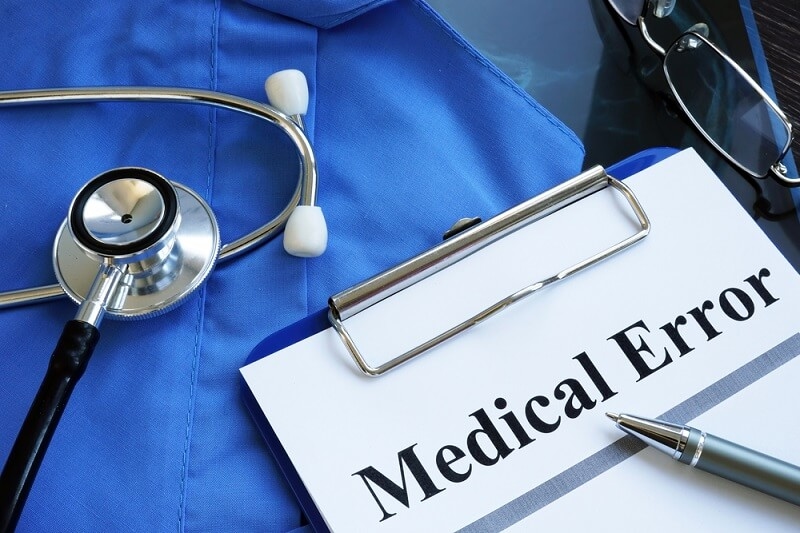
Medication errors are the most avoidable healthcare risks, yet they still happen at alarming frequencies. From dosing errors to missed drug interactions, these errors have significant implications for patients and can even result in fatalities. These mistakes compromise patient safety, increase healthcare costs, generate hospital readmissions, and expose practitioners to legal concerns.
Recognizing how and why medication errors occur and understanding the potential prevention measures is paramount to developing safer healthcare environments. When practitioners emphasize safe procedures and use evidence-based recommendations for prevention, clinicians can mitigate risks and protect patients at any point of care.
Medication errors are avoidable incidents that can result in improper use of medications or harm to a patient. They can happen anywhere in the prescribing, dispensing, administering, or monitoring.
Among the most prevalent examples are:
The World Health Organization estimates that millions of patients are afflicted by these mistakes annually, making them one of the major causes of preventable harm in medical care.
Medication errors directly have an impact on patient safety since even slight strays from the correct procedure can lead to fatal health outcomes. Patients can undergo aggravated diseases, new medical conditions, or harmful side effects. In other instances, the result could be deadly.
Key risks are:
Preventing medication errors is not only about compliance—it's about professional obligation and moral care for healthcare organizations.

Medication errors are rarely caused by one factor alone. Instead, they are often the result of several breakdowns in the healthcare system.
Poor calculations, illegible handwriting, or misinterpreted instructions also frequently result in overdosing or underdosing patients.
Patients who are taking a large number of medications are more likely to suffer from adverse drug interactions, particularly when care is fragmented among multiple providers or pharmacies.
Incomplete documentation, verbal miscommunication, or poor labeling can all lead to errors.
Tired workers, long hours, and rushed schedules frequently decrease attention to detail, thus increasing the risk of errors.
If patients are not sufficiently educated regarding their drugs, they can abuse them, miss doses, or interact with drugs inappropriately.
Ensuring patient safety involves proactive measures, consistent protocols, and ongoing awareness. Adhering to best practices can significantly minimize risks and create a culture of prevention.
Computer designs are also relatively user-proof when they type. Double-checking will be performed when they or another qualified individual checks the drug, dose, and patient.
Drug packaging must be clear, distinguishable, and not easily confused with a similarly packaged medication.
Continual education assures that practitioners are kept up to date on current standards, alternative medications, and hazardous drug-drug interactions.
Advocate for the patient to ask questions, check a prescription, and actively learn about the medication.
Both healthcare providers and the patient have a role to play in preventing medication errors. Here are a few key prevention strategies:
For Healthcare Providers:
Always check for drug interactions before prescribing. Use weight-based dosing for vulnerable populations, such as children and elderly patients. Consistently document all details. Foster open communication with your pharmacist and colleagues.
For Patients:
Maintain an up-to-date list of all medications, including over-the-counter medicines and supplements. Discuss possible dosing errors and side effects with your provider. Adhere to prescription instructions. Inform your provider of any unusual reactions immediately.
Today, we have a powerful partner in promoting patient safety and reducing medication errors—technology. Electronic health record systems (EHRs), automated dispensing machinery, and smart infusion pumps can help identify dosage errors and warn providers about drug interactions before the patient is harmed.
Introducing barcode scanning systems can ensure that the right patient receives the proper medication at the correct dose, significantly decreasing the likelihood of human error.
Reducing medication errors is more than assessing an individual's performance; it represents a systems change. Institutions, whether hospitals or outpatient facilities, need to create an environment that encourages safe behaviors and anonymous reporting of near misses, with the promise of no blame or punishment to the reporter.
Healthcare organizations can create cultures where medication safety becomes everyone's responsibility by encouraging teamwork, transparency, and continuous learning.
By employing proven prevention tips, the risk of medication errors is lessened, and general patient safety is enhanced. Some tips are very simple: double-check the orders before administering medications, educate patients on drug interactions, monitor patients for errors in dosages, etc. These strategies will make a significant difference in outcomes. By incorporating these strategies into daily routines, we enhance patient safety and create environments of trust in provided treatments.
Medication errors remain a persistent threat to patient safety, but they can be avoided with a well-designed system, focus, and education. By intentionally reviewing drug interactions, effectively correcting dosing errors, and using evidence-based safety practices, healthcare professionals can reduce risk and improve outcomes and overall health.
We should reframe incident reporting and implement proactive improvement in daily practice. In that case, the healthcare community will continue moving towards eliminating medication errors and ensuring safe care everywhere. Healthcare professionals can mitigate risk and achieve better outcomes with educated review of drug interactions, effective dosing error correction, and safe practices established by evidence.
If the healthcare community makes improvement and proactive prevention part of the daily process, it can continue to move toward eliminating medication errors and ensuring safe care everywhere.
1. What is the most prevalent type of medication error?
Dosage errors are the most common. They often arise from calculation or communication errors.
2. How do medication errors arise from drug interactions?
Drug interactions may cause unintended side effects or decreased efficacy; thus, it is important to double-check all medicines taken together.
3. What is the patient's contribution to medication error prevention?
Patients assist in preventing mistakes by keeping their medication list current, requesting information, and adhering to orders appropriately.
4. What strategies can hospitals use to prevent patient harm from medication errors?
By having standardized procedures in place, utilizing technology such as EHRs and barcodes, and having a safety-first mindset.
5. Can medication errors always be prevented?
Although not all errors can be avoided, most can be prevented with good communication, attention to detail, and strong safety systems.
This content was created by AI